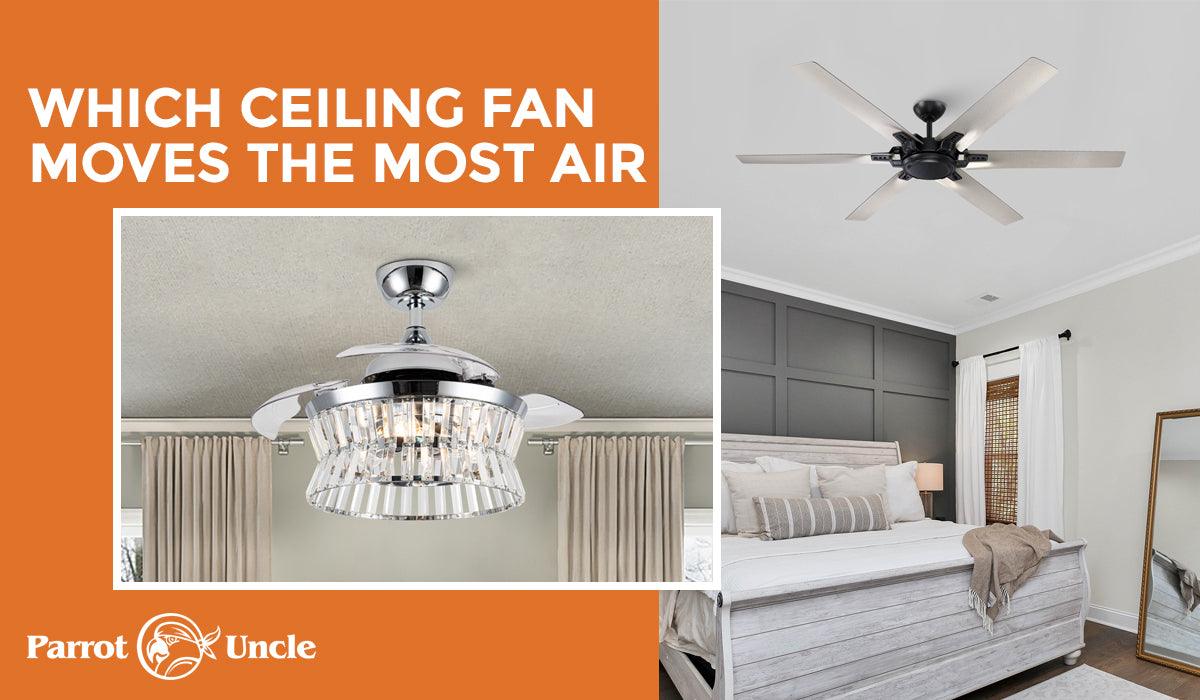Which Ceiling Fan Moves the Most Air
There are several factors to consider when choosing a ceiling fan for your space. One of the most critical factors is the fan's ability to move air efficiently. This blog post will compare various sizes of ceiling fans to help you understand which ceiling fan moves the most air and why.
Ceiling fans come in a variety of sizes, from compact 24-inch designs to large 72-inch models. The size you choose depends largely on the size of your room. However, a common misconception is that the larger the fan, the more air it moves. While this is true in some cases, the amount of air a fan moves doesn't depend solely on its size. Other factors such as fan blade spacing, motor mass, and RPM (revolutions per minute) also play a role.
Small ceiling fans (24-42 inches)
Small ceiling fans are great for smaller rooms like bedrooms, home offices, or kitchens. While they may not move as much air as their larger counterparts, they can still provide comfortable levels of air circulation. For example, a 42-inch fan can move approximately 2,000 to 3,000 cubic feet of air per minute (CFM) at maximum speed.
Medium ceiling fans (44-54 inches)
Medium fans are the most common type of ceiling fan and are suitable for medium-sized rooms. Due to their larger size and typically more powerful motors, these fans typically move more air than smaller fans. The maximum speed for a 52-inch fan is around 4,000 to 5,000 CFM.
Large ceiling fans (56-72 inches)
Large ceiling fans are designed for larger rooms and open spaces. These fans can move large amounts of air due to their large blade spans and powerful motors. For example, a 72-inch fan has a maximum speed of 9,000 to 11,000 CFM.
However, size is only part of the equation. Two other key factors in determining the amount of air a fan can move are blade spacing and the fan's RPM.
Blade Pitch
Blade pitch refers to the angle of the blade, measured in degrees. Higher blade pitch means the fan can cut the air more efficiently, moving more air. Most ceiling fans have blades spaced between 12 and 15 degrees apart. However, high-performance fans can have blade pitches as high as 20 degrees.
RPM (revolutions per minute)
RPM refers to the speed at which the fan blades rotate. The higher the RPM, the more air the fan can move. However, higher RPM doesn't always mean better air flow. First, high-speed rotating blades will produce greater noise, which may affect people's comfort and rest. Secondly, high-speed rotating blades consume more electricity, which may increase electricity bills. Too high an RPM may also have an impact on the lifespan of your ceiling fan. Because high-speed rotation will increase the wear of the blades and motor, thereby shortening the service life of the ceiling fan. In addition to considering RPM, the air flow effect of the fan also depends on the blade pitch and the quality of the motor.
Motor Quality
The quality of the motor is another key factor that affects the amount of air delivered by the fan. A high-quality motor not only moves more air, but it also runs quieter and lasts longer. And in most cases, the better the quality of the motor, the less noise it produces when running. This is because motors with greater mass are usually more rationally designed and can effectively reduce vibration and noise during operation. This will help improve the comfort of using the ceiling fan, allowing people to enjoy the coolness brought by the air flow without being disturbed by the noise.
In conclusion, while the size of the fan is an important factor, it is not the only factor that determines how much air the fan can move. If you're looking for a fan that moves the most air, consider a large ceiling fan with a high blade pitch, a high-quality motor, and high RPM.











Leave a comment